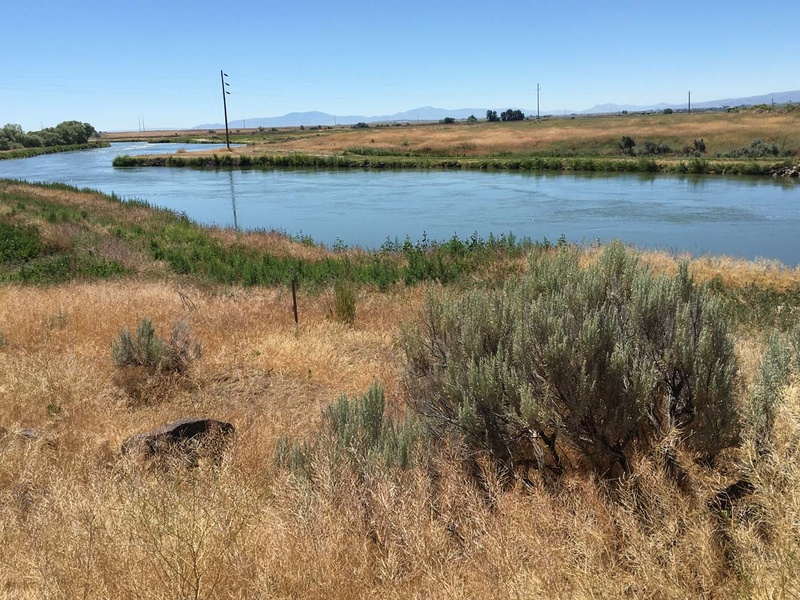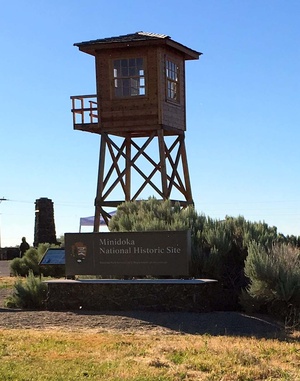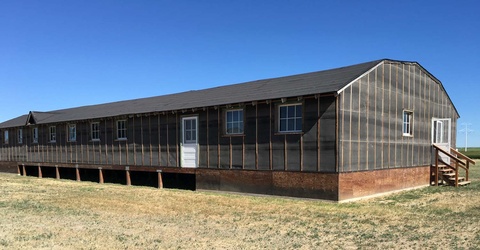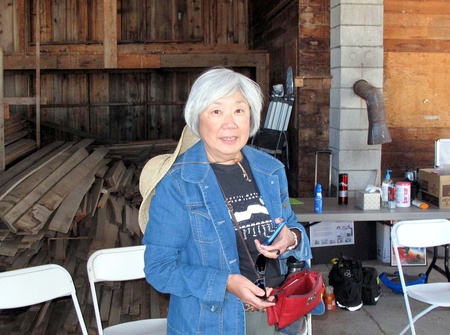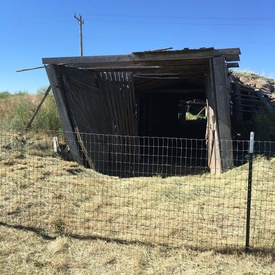Returning to my birthplace for the first time after 72 years wasn’t quite the thrill I might have hoped for. After all, my “home” wasn’t anything like the houses I’d grown to admire from reading Dick and Jane stories when I was a kid in school. Instead, my “home” was a single small room occupied by my parents, my two sisters, and me in a tarpapered, prison barrack that was little more than a shack out in a god-forsaken Idaho desert.
On June 23rd, I embarked on a four-day Minidoka Pilgrimage, as the organizers deemed the event, and was even invited to speak at the Friday educational session held at the College of Southern Idaho.
“I don’t feel one bit excited,” I carped as I threw my bathing suit into my suitcase, hoping to take a dip in the waters of the North Side Canal, where a young girl had drowned during our captivity during WWII.
“It’s hot there,” my sister had warned over the phone. “Make sure you drink lots of water!”
“It’s not the heat. It’s the rattlesnakes I’m worried about,” I said to my husband as he backed our car out of the garage and headed down the road.
“Rattlesnakes! You never told me about snakes!” he whimpered.
“Snakes,” one of the former detainees told us, “were the least of our worries. I was out playing and saw something that looked like a shrimp. I showed it to my mother and she said, ‘You better take that outside. It’s a scorpion!’”
The Minidoka prison camp, built on 33,000 acres of barren wasteland, was where my family and 9,000 other Japanese emigres and their children were imprisoned. The decrepit buildings of the former Minidoka Relocation Center, now a National Historic Site managed by the National Parks Service, looked lonely and abandoned as we drove up. But the surrounding land was amazingly green and fertile in contrast to the dusty, barren desert my brothers and sisters had described in their stories.
Inside a former barrack, pilgrims, who’d been reluctant to speak at the educational sessions the day before, now began to reminisce.
“I remember eating Minidoka nappa,” Haruko Sakai, who had been interned in Block 26, told us. “I don’t know what vegetable it was or if they pickled it in brine first. But we kids ate it cooked in shoyu (soy sauce) and sugar.”
“We killed the rattlesnakes with machetes and used the rattles to play with,” her friend reminisced. “People put the snakes in alcohol and called it medicine.”
A tiny, elderly woman began to speak. “We could see the rattlesnakes through the cracks in the floor boards. They hid under the barracks to keep warm in the winter. We used the coal stoves to warm our mittens in school…sometimes they burned. Everyday someone had to go home without mittens.”
A Seattle pilgrim, who introduced himself as Nibs Sakamoto, said, “We didn’t have running water. If we wanted water, we had to go out to the toilets to get it.”
Inside what had been a mess hall, we sat at the picnic tables and listened to what the others had to say.
“They served us rotten fish at first. Some women had no milk to give their children. Eventually there was milk for the kids, but it was rationed to one glass a day.”
“We knew which mess halls had the best cooks. So we’d run over to that one for lunch. Some days we ate lunch twice!”
“We kids had oyatsu (a snack of watery rice) in the afternoon.”
“Saturday nights, we’d push back the tables and have a dance.”
“Block 36 was notorious for fights!”
“They made natto in Block 32.”
“Sometimes we watched movies, like Flash Gordon, and ate pine nuts. But not everyday, like the movie houses.”
“At Christmas, we’d have a contest to see which block had the best decorations.”
“The Quakers were good to us. They gave us presents.”
“Did you have a special meal?” the pilgrimage guide asked.
“Yeah, we had sausage and sauerkraut! and tongue!”
Standing in front of the former fire hall, Mia Russell, the Executive Director of the Friends of Minidoka, told us the Nikkei firemen were excellent firefighters. The US Grazing Service hired them to fight fires in the outlying areas, and gave them a merit raise for their efforts.
We then walked from the fire hall to a former baseball field where tour guide, Hanako Watatuski, told us that after the war, a vast portion of the 33,000 acres was given away to white veterans in three lotteries established by the Bureau of Reclamation. “Nikkei veterans were not permitted to participate, but at Tule Lake, German and Italian POWs were allowed to enter their names!”
Staring at the lush fields surrounding the sports field, I remembered that by 1943, Minidoka detainees were no longer dependent on government hand-outs. They were raising their own food by working the land the Issei and Nisei had made arable by creating the canal flats. Their dedication turned a desert into a self-sustaining prison camp, whose surplus food was trucked to other concentration camp communities. Many Japanese Americans were temporarily released from captivity to work for local farmers. Their industry helped save several family farms in Jerome County.
Released from confinement to fight in the military, Nisei young men fought and died in the most hard-won theatres in Europe and the Pacific. Their peers, who dared to protest their imprisonment, languished in maximum security prison camps, vilified and isolated from their communities.
By the final night of the pilgrimage, it was clear to me that American institutional beliefs and practices—the ones held dear by families like Dick and Jane’s—remained undisputed in the celebratory thoughts of most white Americans following the declaration of armistice, whose power had been consolidated under the watch of the Roosevelt administration. But we, the Japanese Americans, whose morale and confidence in America had been shattered by enslavement, captivity, and dishonor, were forced to begin again in cities and rural areas where we were not wanted—still stigmatized by color and the nature of our ancestry.
© 2016 Diana Morita Cole


